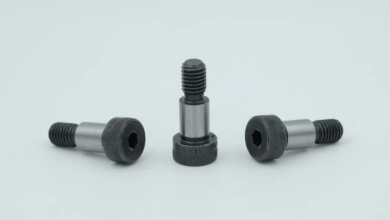Pharmacy Refrigerators: Common Mistakes and How to Avoid Them

Pharmacy refrigerators play a critical role in healthcare, ensuring that medications, vaccines, and other temperature-sensitive supplies are stored safely and effectively. Unlike household refrigerators, these specialized units are engineered to maintain precise temperature ranges, prevent contamination, and comply with regulatory standards.
Despite their importance, many pharmacies, hospitals, and laboratories make avoidable mistakes when purchasing, installing, or maintaining pharmacy refrigerators. These errors can lead to spoiled medications, compliance issues, financial losses, and, most importantly, risks to patient safety.
This article explores the most common mistakes people make with pharmacy refrigerators and provides practical solutions to help avoid them.
Mistake 1: Using a Household Refrigerator for Medications
One of the biggest mistakes is assuming that a standard kitchen refrigerator can perform the same job as a pharmacy-grade unit. Household fridges are not built to maintain the strict and stable temperature range (usually 2°C to 8°C) required for sensitive pharmaceuticals.
Why This is a Problem:
- Household fridges often have temperature fluctuations when doors are opened.
- Cold spots and warm spots inside can cause uneven storage.
- Lack of alarms and monitoring systems means problems often go unnoticed.
How to Avoid It:
Always invest in a dedicated pharmacy refrigerator. These units are designed with precise temperature controls, uniform airflow, and monitoring systems that ensure medications remain within safe limits.
Mistake 2: Overloading the Refrigerator
Overstuffing a pharmacy refrigerator may seem like a space-saving strategy, but it can block airflow and compromise temperature stability.
Why This is a Problem:
- Air vents can be obstructed, leading to uneven cooling.
- Medications at the back or bottom may not receive proper refrigeration.
- Increased strain on the unit can cause mechanical issues.
How to Avoid It:
- Follow manufacturer recommendations for load capacity.
- Organize medications on shelves with space between them for airflow.
- If storage needs are increasing, consider upgrading to a larger unit.
Mistake 3: Ignoring Temperature Monitoring
Pharmacy refrigerators must be monitored regularly to ensure consistent temperatures. Relying solely on the built-in thermostat is risky, as malfunctions or power outages can compromise stored items.
Why This is a Problem:
- Temperature fluctuations may go unnoticed until it’s too late.
- Without records, it’s impossible to prove compliance during audits.
- Spoiled medications may be administered unknowingly, affecting patient health.
How to Avoid It:
- Use digital data loggers to track temperatures continuously.
- Set up alarms to notify staff of any temperature breaches.
- Conduct regular manual checks to complement automated systems.
Mistake 4: Improper Placement of the Refrigerator
The location of a pharmacy refrigerator can significantly affect its performance. Placing it in unsuitable environments can lead to inefficiency and damage.
Why This is a Problem:
- Units placed near heat sources (like ovens or direct sunlight) may overwork.
- Poor ventilation around the unit can cause overheating.
- Uneven floors can affect compressor function.
How to Avoid It:
- Position the refrigerator in a cool, well-ventilated area.
- Keep it away from windows, radiators, or other heat-producing equipment.
- Ensure it is level and has enough clearance around the sides and back.
Mistake 5: Skipping Regular Maintenance
Pharmacy refrigerators require consistent care to function properly. Neglecting routine maintenance is a mistake that can shorten the lifespan of the unit and compromise medication safety.
Why This is a Problem:
- Dust buildup on condenser coils reduces cooling efficiency.
- Worn-out seals can allow warm air inside.
- Lack of calibration may cause inaccurate temperature readings.
How to Avoid It:
- Schedule regular professional servicing.
- Clean coils and check seals at least once every few months.
- Calibrate sensors and alarms to ensure accuracy.
Mistake 6: Poor Organization Inside the Unit
How medications are stored inside a pharmacy refrigerator is just as important as the refrigerator itself. Disorganized storage can lead to inefficiency and potential errors.
Why This is a Problem:
- Frequent door openings to find items cause temperature fluctuations.
- Storing drugs in drawers or boxes can restrict airflow.
- Lack of labeling increases the risk of dispensing errors.
How to Avoid It:
- Use clear labeling and transparent storage containers.
- Group medications logically for quick access.
- Keep a digital or physical inventory system for accountability.
Mistake 7: Not Having a Backup Plan
Power outages, equipment malfunctions, or unexpected breakdowns can happen at any time. Without a backup strategy, valuable medications could be lost.
Why This is a Problem:
- Even short power interruptions can spoil sensitive vaccines.
- Emergency situations can create chaos without a plan.
How to Avoid It:
- Have a backup power source such as a generator.
- Train staff on emergency procedures for transferring medications.
- Maintain a secondary storage option for critical items.
Mistake 8: Neglecting Compliance and Regulations
Pharmacies are subject to strict regulations regarding the storage of medications. Failing to meet these standards can result in penalties, fines, or legal issues.
Why This is a Problem:
- Non-compliance can lead to failed inspections.
- Legal risks increase if compromised medications are dispensed.
- Reputational damage can harm business trust.
How to Avoid It:
- Choose refrigerators that meet CDC, WHO, and local regulatory guidelines.
- Keep detailed logs of temperature records for audits.
- Train staff on proper storage protocols.
Mistake 9: Choosing the Wrong Size Refrigerator
Selecting a pharmacy refrigerator that’s too small or too large can create long-term problems.
Why This is a Problem:
- Too small: Overcrowding leads to poor airflow and temperature issues.
- Too large: Wasted energy and difficulty maintaining consistent temperatures.
How to Avoid It:
- Assess your current storage needs and project future growth.
- Work with a supplier who can recommend the right size for your facility.
Read also: Unlocking Culinary Success: The Rise of the Catering Kitchen Melbourne Entrepreneurs Trust
Final Thoughts
Pharmacy refrigerators are vital to ensuring the safety and effectiveness of medications and vaccines. However, common mistakes—from using household units to neglecting monitoring and maintenance—can undermine their purpose.
By being proactive and avoiding these pitfalls, healthcare providers can ensure compliance, protect their investments, and most importantly, safeguard patient health.
When selecting or upgrading your equipment, it’s worth consulting industry experts who specialize in medical refrigeration. For more information and reliable solutions, you can visit https://habcomfg.com/, a trusted resource for pharmacy refrigeration equipment.




